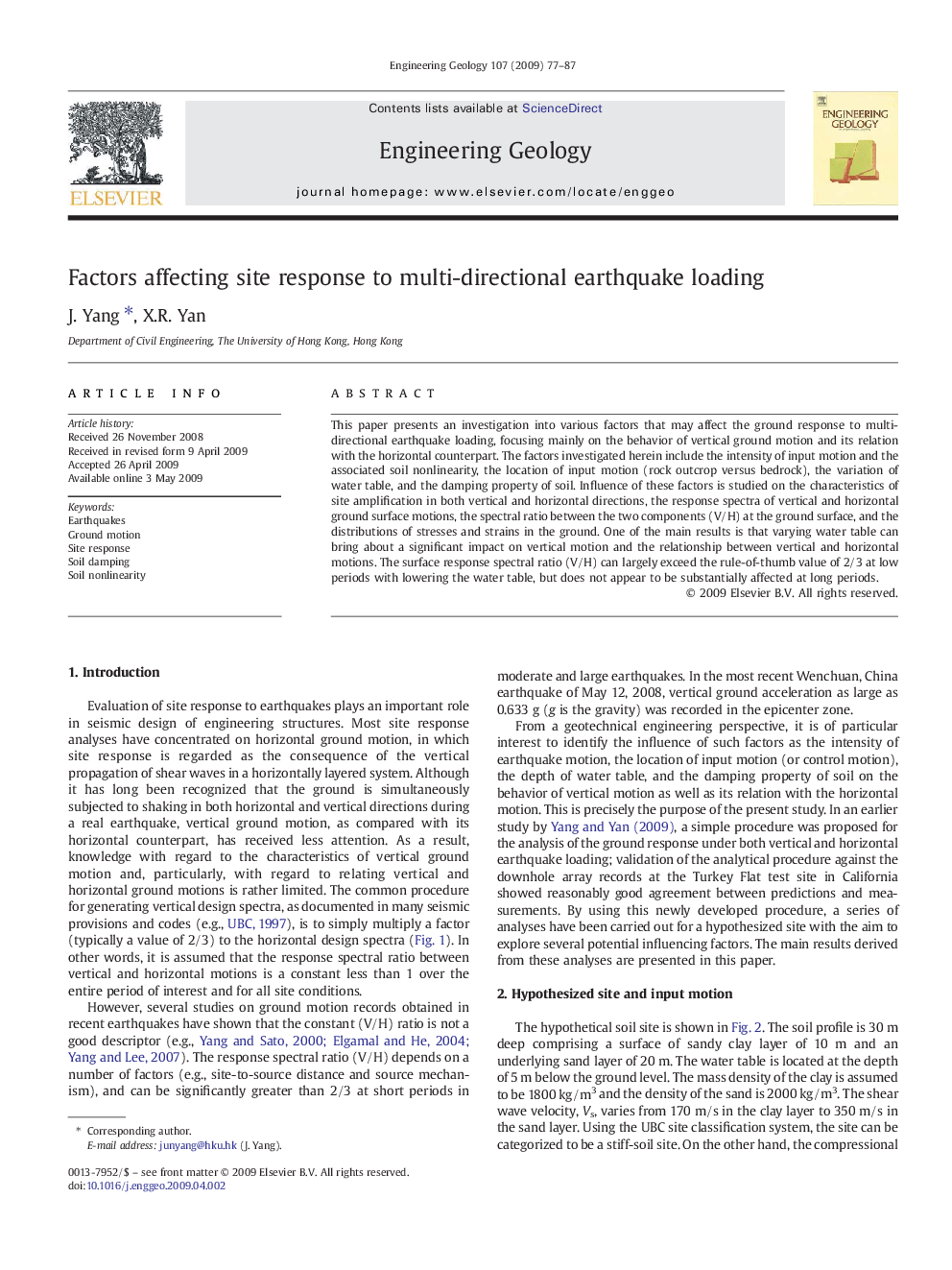| Article ID | Journal | Published Year | Pages | File Type |
|---|---|---|---|---|
| 4744557 | Engineering Geology | 2009 | 11 Pages |
This paper presents an investigation into various factors that may affect the ground response to multi-directional earthquake loading, focusing mainly on the behavior of vertical ground motion and its relation with the horizontal counterpart. The factors investigated herein include the intensity of input motion and the associated soil nonlinearity, the location of input motion (rock outcrop versus bedrock), the variation of water table, and the damping property of soil. Influence of these factors is studied on the characteristics of site amplification in both vertical and horizontal directions, the response spectra of vertical and horizontal ground surface motions, the spectral ratio between the two components (V/H) at the ground surface, and the distributions of stresses and strains in the ground. One of the main results is that varying water table can bring about a significant impact on vertical motion and the relationship between vertical and horizontal motions. The surface response spectral ratio (V/H) can largely exceed the rule-of-thumb value of 2/3 at low periods with lowering the water table, but does not appear to be substantially affected at long periods.
